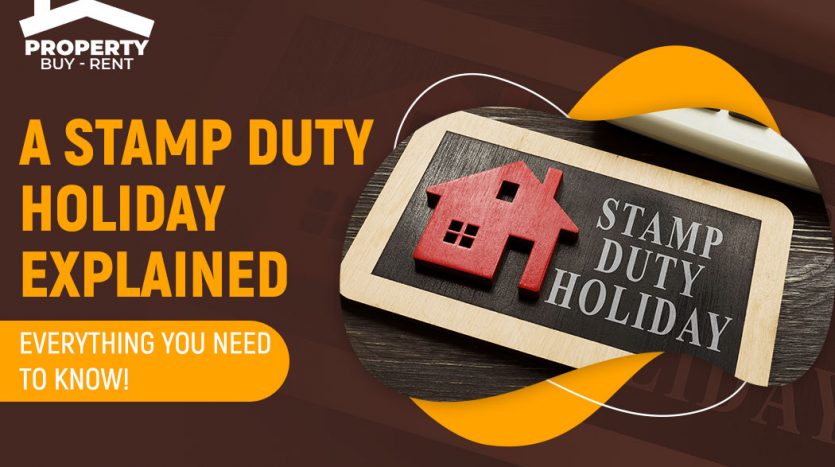Stamp duty is one of the most hated and complicated parts of buying property in the UK. But it’s also one of the only taxes that are widely misunderstood by homeowners. To help you get to grips with it, we’ve created this guide on everything you need to know about stamp duty, including what stamp duty holiday is and when it expires.
Whether you’re an experienced homeowner or buying your first home, this guide will ensure you know your rights when it comes to this tax.
What is Stamp Duty?
Stamp duty is a tax that the government imposes on documents that transfer ownership of property, buildings, or shares. It’s also sometimes referred to as stamp duty land tax (SDLT). The more expensive the property, the higher the stamp duty that you’ll have to pay.
For example, if you’re buying a property worth £250,000, stamp duty might cost around £5,000. On a house worth £1 million, however, it could be around 100 000 UK£.
As of today, only the people of England and Northern Ireland will enjoy this stamp duty holiday since Scotland and Wales have their own property taxes (Land & Buildings Transaction Tax in Scotland, and Land Transaction Tax in Wales).
What is Stamp Duty Holiday?
The Stamp Duty Holiday, which is tax-free for a limited time in order to incentivize homeownership, began in July 2020 and ran until 30 June 2021. This applied to any homes that cost less than £500,000 before 1 July 2021.
Stamp Duty Land Tax has been temporarily increased for people who own property worth more than the previous nil rate band, so it’s likely going to apply to homeowners, with SDLT rates dropping as a result.
Rather than ending on March 31st, 2021, the temporary nil rate band of £500,000 will be in place until June 30th, 2021. Beginning July 1st, 2021 to September 30th, 2021, the nil rate band will be £250,000. On October 1, 2021, the nil rate band will go back to the regular amount of £125,000.
How Does The Stamp Duty Holiday Work?
Stamp duty is a kind of tax you have to pay when you buy a property. This typically means that the landowner pays stamp duty, which is then reclaimed from the buyer. But, there are occasions when it’s not this way round and the buyer has to cough up all or some of the money for stamp duty too.
So what is a stamp duty holiday?
It’s an exemption from paying the usual level of stamp duty. In other words, if you’re buying a house during this time, you’ll only need to pay £125 on top of your purchase price rather than £250 or more.
Are Second Home Buyers Affected By This Tax Cut?
No, the tax cut applies only to purchases of a home made by first-time buyers. If you are already a homeowner and are looking to purchase your second home, this stamp duty holiday is not for you. The other factor that will come into play when considering the benefits of this reduced tax on property purchases is how long it will last.
With Brexit looming over us, no one knows what’s going to happen in regards to taxes or tariffs. For example, if it were announced that we would be leaving the EU without a deal in place, then most likely our government would end any kind of reduction in taxes and tariffs at once – even if it meant breaking an election promise.
Stamp Duty Holiday: Will It Benefit Buyers or Sellers?
Stamp duty holidays benefit buyers since it is buyers who pay the tax. Still, the evidence from 2008 leads me to conclude that many homeowners actually make money when property values increase.
Considering that their buyer won’t have to pay stamp duty means their price doesn’t have to be as high. They may especially consider it an incentive to keep their asking price high for properties costing a lot more.
Stamp duty can be in the tens of thousands, depending on how much a property costs. It really depends on who negotiates the best between the buyers and sellers as to who ultimately benefits. In the end, it’s likely that half of the difference in stamp duty will go to the sellers.
What Are Stamp Duty Rates from 1 October 2021?
Now that the holiday is over, the Stamp Duty rates are returning to what they were before 8 July 2020. If you’re buying a property to live in it, these are the rates
| Property price | Stamp duty rate |
| up to £125,000 | Zero |
| portion from £125,001 to £250,000 | 2% |
| portion from £250,0001 to £925,000 | 5% |
| portion from £925,001 to £1.5 million | 10% |
| remaining amount above £1.5 million | 12% |
To continue with the previous example, if you buy a house for £750,000, the SDLT will be
0% on the first £125,000
2% on the next £125,000 = £2,500
5% on the remaining £500,000 = £25,000
Total SDLT = £27,500
You will also have to pay SDLT if you’re buying a shared ownership property. If you’re buying an additional residential property, such as a holiday home, you will usually have to pay 3% on top of SDLT.
For Sales & Booking:
UK Office Address: 88-90 Goodmayes Road, Goodmayes, IG3 9UU, UK
Feel Free to contact us:
+44 798380 4244
Info@propertybuy-rent.co.uk





